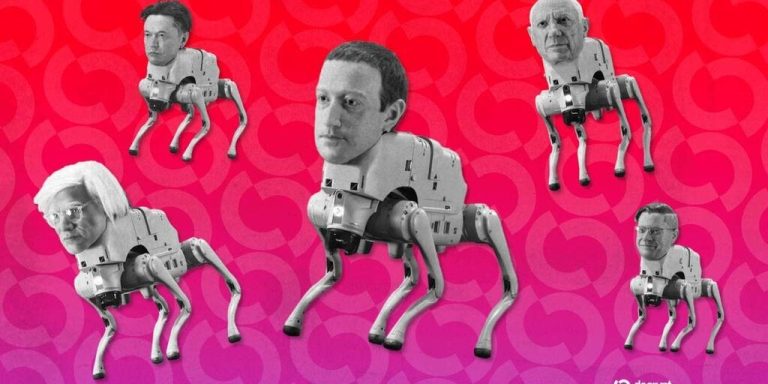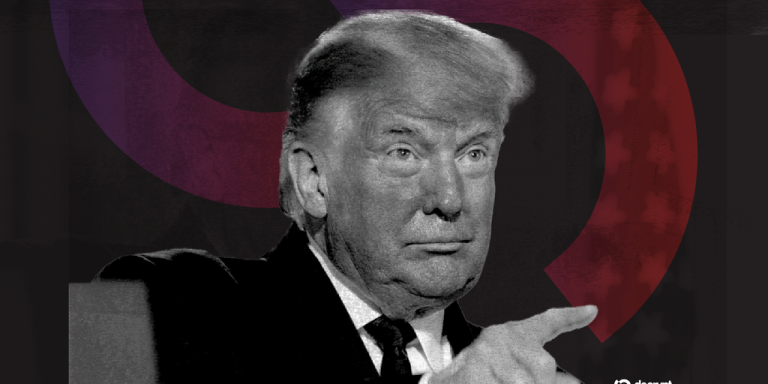
Falconry is more than just a method of hunting; it’s a deep-rooted tradition that connects humans with the majestic birds of prey. This ancient art has evolved over centuries, showcasing a rich history that stretches from the deserts of the Middle East to the forests of Europe. In this guide, we’ll explore the techniques, cultural significance, and modern practices of falconry, shedding light on how this age-old skill continues to captivate enthusiasts around the world.
Key Takeaways
- Falconry has ancient roots, particularly in the Middle East, where it began as a hunting method and a symbol of status.
- The art of falconry spread to Europe, influencing hunting practices and becoming a noble pastime during the Middle Ages.
- Modern falconry blends traditional techniques with contemporary practices, including the use of technology for tracking birds.
- Mentorship plays a crucial role in learning falconry, as aspiring falconers often rely on experienced trainers for guidance.
- Conservation efforts are increasingly tied to falconry, emphasizing the importance of ethical practices and wildlife preservation.
Origins of Falconry
Historical Roots in the Middle East
Falconry’s story starts way back, and it looks like the Middle East is where it all began. Ancient Mesopotamia, specifically Assyria (think parts of modern Iraq, Syria, and Turkey), seems to be the place where people first started training birds of prey to hunt. They used different kinds of raptors, and it wasn’t just about getting food; it was also a status symbol. It’s pretty cool to think about how long ago this all started.
Early Practices and Techniques
So, what did falconry look like back then? Well, it wasn’t exactly like what you see today. The early techniques were probably pretty basic, but effective. Selecting the right bird was key, and I imagine there was a lot of trial and error involved. They were figuring out how to work with these birds, understand their behavior, and train them to hunt together. It’s amazing how they developed these skills without all the fancy equipment we have now.
Cultural Significance in Ancient Societies
Falconry wasn’t just a way to get dinner; it became a big deal culturally. It showed up in art, stories, and even social structures. In some societies, only certain people were allowed to practice it, which made it even more exclusive. It’s interesting how a hunting technique turned into something that reflected power, status, and the relationship between humans and nature.
Falconry’s early cultural significance is a testament to its profound impact on ancient societies. It wasn’t merely a hunting method but a symbol of status, skill, and the intricate relationship between humans and the natural world. This legacy continues to shape our understanding and appreciation of falconry today.
Here’s a quick look at how falconry was viewed in different regions:
- Symbol of power and nobility.
- A practical hunting method.
- A way to connect with nature.
Cultural Significance and Spread

Falconry didn’t just stay in one place; it traveled the world, picking up new meanings and traditions along the way. From its start in the Middle East, it made its way into Europe and beyond, becoming a symbol of status and skill. It’s interesting to see how different cultures took this practice and made it their own.
Falconry in the Arab World
In the Arab world, falconry is more than just a sport; it’s a deep-rooted part of the culture. It represents a connection to the land and a heritage of hunting that goes back centuries. Falcons are seen as symbols of courage and nobility, and the practice of falconry is passed down through generations. It’s not uncommon to see falconry traditions celebrated at festivals and events, highlighting its importance in the region.
Integration into European Traditions
When falconry arrived in Europe, it quickly became a favorite pastime of the nobility. It wasn’t just about hunting; it was a way to show off wealth and status. The birds themselves became status symbols, and the equipment used in falconry was often elaborately decorated. Falconry even made its way into art and literature, further cementing its place in European culture.
Influence on Modern Hunting Practices
Even today, falconry has an impact on how we think about hunting. While modern hunting often relies on technology, falconry keeps a connection to older, more traditional methods. It reminds us of the relationship between humans and nature, and the skill and patience required to work with animals in the wild. Plus, falconry’s focus on conservation has helped shape ethical hunting practices, ensuring that we respect and protect the environment.
Falconry’s journey across cultures shows how a simple hunting technique can evolve into something much bigger. It becomes a symbol of identity, a connection to the past, and a reminder of our place in the natural world. It’s a story of adaptation, tradition, and the enduring bond between humans and birds of prey.
The Art of Falconry in History
The art of falconry isn’t just about birds; it’s a slice of human history, showing how we’ve interacted with nature. It started as a way to get food, but it turned into something way bigger – a symbol of culture and tradition. Let’s take a look at how falconry has shaped, and been shaped by, history.
Falconry as a Symbol of Status
Falconry wasn’t just for anyone. It was a big deal, a way to show off your place in society. Think of it like this: owning a fancy car today, but with wings. In medieval Europe, it was practically a sport for kings and nobles. The type of bird you had even showed your rank. Seriously!
Notable Historical Figures
Lots of important people were into falconry. Frederick II of Hohenstaufen, a Holy Roman Emperor, even wrote a book about it, De Arte Venandi cum Avibus. That’s how serious he was about falconry training. It wasn’t just a hobby; it was a passion that even emperors shared.
Evolution of Techniques Over Time
Falconry techniques didn’t just pop up overnight. They changed and got better over time. Early on, it was all about getting food. But as time went on, people figured out better ways to train the birds, understand their behavior, and even breed them. It’s a story of constant learning and improvement. Here’s a quick look at how things changed:
- Early falconry: Basic hunting, simple tools.
- Medieval falconry: More refined techniques, status symbol.
- Modern falconry: Conservation focus, advanced equipment.
Falconry’s journey through time shows how humans can develop a deep connection with nature. It’s not just about hunting; it’s about understanding and respecting the natural world. It’s a tradition that has survived for centuries, adapting to new challenges and continuing to inspire people today.
Modern Falconry Practices

Falconry has changed a lot! It’s not just about hunting anymore. Now, it’s a mix of old traditions and new ideas. People do it for fun, to connect with nature, and to help protect birds of prey.
Contemporary Techniques and Equipment
Modern falconry uses some cool tech. We’re talking radio telemetry to track birds, fancy leather hoods, and special gloves. It’s not all old-school. These tools help falconers take better care of their birds and keep them safe. Plus, there are specialized falcon hospitals now. These places are super important for keeping the birds healthy. They offer treatments and rehab services.
Falconry as a Recreational Sport
Falconry is a sport, sure, but it’s also a way to keep a cultural heritage alive. People aren’t just doing it for food. They enjoy training the birds and watching them fly. It’s a hobby that connects you to nature and history. It’s a lifestyle. You need to know a lot about raptor care, and it takes real dedication.
Conservation Efforts and Ethical Considerations
Falconry has a big role in protecting wildlife. Falconers help with research and habitat preservation. They also teach people about birds of prey and why they’re important. There are rules and laws to make sure falconry is done ethically and doesn’t hurt the environment.
Modern falconry is all about balancing tradition with doing what’s right for the birds and the environment. It’s about respecting the past while looking out for the future.
Mentorship and Learning in Falconry
So, you wanna be a falconer? It’s not something you can just pick up from a book. It’s an art, a tradition, and it requires guidance. That’s where mentorship and formal training come in. Think of it like learning a trade – you need someone experienced to show you the ropes, and maybe some structured learning to back it up.
Role of Mentorship in Training
A mentor is your guide in the world of falconry. They’re not just teachers; they’re experienced falconers who share their knowledge, skills, and passion for the sport. A good mentor will teach you everything from bird handling to hunting techniques, and most importantly, respect for the bird. It’s a one-on-one relationship built on trust and shared experience. Finding the right mentor is key. They’ll help you avoid common mistakes and develop a solid foundation in falconry. It’s like having a personal coach, but for birds of prey.
Formal Training Programs
While mentorship is invaluable, formal training programs offer a structured approach to learning falconry. These programs usually cover a range of topics, including:
- Bird health and care
- Training methods
- Legal and ethical considerations
- Equipment maintenance
These programs often include hands-on experience and theoretical knowledge, giving you a well-rounded education in falconry. Plus, completing a formal program can sometimes be a requirement for obtaining a falconry license. It’s like going to school for falconry – you learn the fundamentals and gain the credentials you need to practice the sport safely and responsibly.
Community and Networking Opportunities
Falconry isn’t a solitary pursuit. It’s a community of passionate individuals who share a love for birds of prey. Joining a falconry club or association can provide you with networking opportunities, access to resources, and a sense of belonging. These organizations often host events, workshops, and hunting trips, allowing you to connect with other falconers and learn from their experiences. It’s a great way to stay up-to-date on the latest techniques and conservation efforts. Plus, you might just make some lifelong friends who share your passion for falconry clubs.
Being part of a falconry community is about more than just sharing tips and tricks. It’s about preserving a tradition, promoting ethical practices, and ensuring the future of falconry for generations to come. It’s about connecting with like-minded people who understand the unique bond between humans and birds of prey.
Techniques of Falconry
Bird Handling and Care
Okay, so first things first: you gotta know how to handle your bird. It’s not like picking up a puppy. We’re talking about a predator here. Building trust is key. This means gentle, consistent interaction. Think of it as a slow dance, not a wrestling match. You’ll need to get them used to falconry equipment, like hoods and jesses. And, of course, proper feeding is non-negotiable. A healthy bird is a happy (and effective) bird. For membership students, this is where personalized instruction really shines.
Training Methods for Raptors
Training a raptor? Patience is your new best friend. It’s all about positive reinforcement. The whistle becomes your bird’s ringtone – a signal for food. Lure training is also super important; it mimics the hunt and keeps their skills sharp.
- Start with short sessions.
- Keep it consistent.
- Always end on a positive note.
Training isn’t just about teaching tricks; it’s about building a partnership. You’re working with the bird, not controlling it. Understanding their instincts is half the battle.
Hunting Strategies and Tactics
Alright, time to put all that training to work. Hunting with a raptor is an art form. It’s not just about releasing the bird and hoping for the best. You need to understand the terrain, the prey, and your bird’s strengths.
- Choose the right location.
- Know your prey’s habits.
- Communicate with your bird.
Modern falconry uses advancements like radio telemetry for tracking. It’s a blend of old-school tradition and new-school tech. The process of manning is foundational for the bird’s responsiveness.
Falconry and Conservation
Impact on Wildlife Preservation
Falconry, when done right, can actually help wildlife. It’s not just about hunting; it’s about understanding and respecting the ecosystem. Falconers often become deeply involved in conservation efforts because they see firsthand the impact of environmental changes on bird populations. They’re invested in maintaining healthy habitats.
Educational Initiatives
Falconry isn’t just a sport; it’s a chance to teach people about birds of prey and the environment. Many falconers take part in educational programs, showing off their birds and talking about falconry practices. It’s a cool way to get people interested in conservation.
By teaching others about these amazing birds, falconers help create a new generation of conservationists.
Sustainable Practices in Falconry
Modern falconry is all about sustainability. It’s about making sure that hunting doesn’t hurt bird populations or the environment. This means:
- Carefully managing hunting seasons.
- Participating in breeding programs.
- Supporting habitat conservation.
Falconers are working to keep this tradition alive while protecting the birds and their homes.
Wrapping Up Our Falconry Journey
So, there you have it! Falconry is more than just a way to hunt; it’s a deep-rooted tradition that connects us to nature and history. From its ancient beginnings in the Middle East to its modern-day practices, this art form has evolved but still holds onto its core values. Whether you’re a seasoned falconer or just curious about the sport, there’s something magical about the bond between humans and these incredible birds. As we move forward, let’s keep the spirit of falconry alive, respecting its past while embracing its future. Who knows? Maybe you’ll find yourself inspired to take up this noble pursuit!
Frequently Asked Questions
What is falconry?
Falconry is the practice of training birds of prey, like falcons and hawks, to hunt for food. It’s an ancient art that connects humans with these amazing birds.
Where did falconry originate?
Falconry likely started in the Middle East, particularly in ancient Mesopotamia. It was practiced by nobility who used trained raptors for hunting.
How has falconry changed over time?
Over the years, falconry has evolved from a survival skill to a respected sport and hobby. Techniques and equipment have improved, and it now includes conservation efforts.
What do falconers do today?
Today, falconers train and care for their birds, often participating in competitions or exhibitions. They also focus on conservation and educating others about birds of prey.
Is falconry considered ethical?
Many falconers prioritize the well-being of their birds and follow strict guidelines to ensure ethical practices. Conservation efforts are also a big part of modern falconry.
How can someone learn falconry?
To learn falconry, it’s best to find a mentor or join a formal training program. This helps beginners gain hands-on experience and knowledge about caring for raptors.






